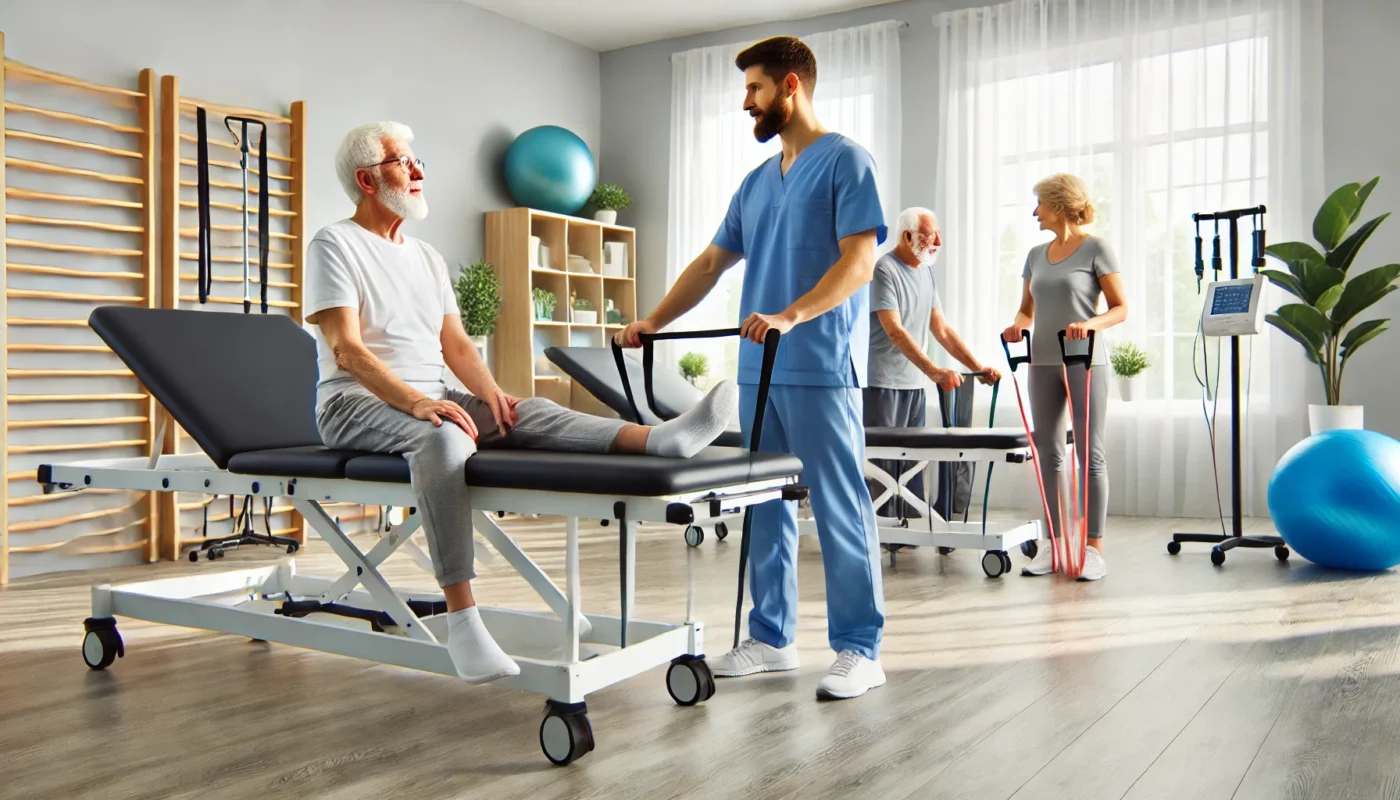As we gracefully age, managing pain becomes an increasingly pertinent issue. For seniors, selecting the most appropriate pain relief option is crucial not only for comfort but also for maintaining overall health and well-being. This article delves into the complexities of pain management for seniors, exploring various pain relief choices, including traditional medications and holistic approaches.
You may also like: Understanding Long-Term Pain Relief Options
The Unique Pain Management Needs of Seniors
With age, the body’s ability to process medications changes, often leading to increased sensitivity and a higher risk of side effects. For seniors, this means that choosing the right pain reliever requires careful consideration of the potential risks and benefits.
Physiological Changes Affecting Pain Management
Aging brings about numerous physiological changes that can affect how pain is experienced and managed. These changes can alter drug metabolism, leading to prolonged effects of medications and increased sensitivity to their side effects. For example, decreased liver and kidney function can slow the clearance of drugs from the body, necessitating dosage adjustments. Understanding these changes is essential for healthcare providers to tailor pain management strategies to seniors’ needs.
Psychological and Emotional Factors
Beyond physical changes, psychological and emotional factors can significantly impact pain perception in seniors. Conditions such as depression and anxiety, which are more prevalent in older adults, can exacerbate pain and make management more challenging. Addressing these mental health issues is crucial in creating a comprehensive pain management plan, as untreated psychological conditions can lead to a cycle of worsening pain and emotional distress.

Social and Environmental Influences
Social isolation and environmental factors can also play a role in pain management for seniors. Limited social interactions and lack of support can intensify feelings of pain and discomfort. On the other hand, a supportive environment with access to resources such as transportation to medical appointments or participation in community activities can positively influence pain management outcomes. Encouraging social engagement and creating a comfortable living environment can aid in reducing pain perception.
Understanding Pain Types in Seniors
Pain in seniors can be categorized into acute and chronic types. Acute pain often arises suddenly due to injuries or surgeries and typically requires short-term management. Chronic pain, on the other hand, persists over time, often due to conditions like arthritis, neuropathy, or past injuries.
Acute Pain: Causes and Management
Acute pain is typically short-lived and can often be traced to a specific event, such as a fall, surgery, or acute illness. Managing acute pain involves identifying the underlying cause and treating it promptly. For seniors, this may involve a combination of medications, rest, and physical therapy to facilitate recovery. It is important to address acute pain effectively to prevent it from developing into chronic pain.
Chronic Pain: Conditions and Challenges
Chronic pain is a persistent pain that lasts for months or even years, often resulting from conditions like arthritis, neuropathy, or past injuries. Unlike acute pain, chronic pain can be more challenging to manage due to its ongoing nature. It may require a multidisciplinary approach that includes medication, physical therapy, psychological support, and lifestyle modifications. Understanding the specific conditions causing chronic pain can guide the development of an effective management plan.
The Psychological Impact of Chronic Pain
Chronic pain can have a profound psychological impact on seniors, affecting their mood, sleep, and overall quality of life. It can lead to feelings of helplessness, depression, and anxiety, creating a vicious cycle that exacerbates pain perception. Addressing the psychological aspects of chronic pain is vital, and may involve counseling, cognitive-behavioral therapy, and support groups to provide emotional support and coping strategies.
Traditional Pain Relief Options
When considering traditional pain relief methods, it’s essential to weigh the efficacy, safety, and potential side effects of medications available for seniors.
NSAIDs: Non-Steroidal Anti-Inflammatory Drugs
NSAIDs, including ibuprofen and naproxen, are commonly used to manage mild to moderate pain. However, they pose significant risks for seniors, including gastrointestinal bleeding, cardiovascular events, and kidney damage. It is crucial to use these medications under a doctor’s guidance, considering the individual’s health profile.
Risks and Precautions
The use of NSAIDs in seniors requires careful monitoring due to the increased risk of adverse effects. Gastrointestinal complications such as ulcers and bleeding are more common in older adults, particularly with prolonged use. Seniors with pre-existing cardiovascular conditions or kidney issues should use NSAIDs with caution, as these drugs can exacerbate these conditions. Healthcare providers may recommend periodic evaluations and alternative pain management strategies to minimize risks.
Alternatives to NSAIDs
For seniors who cannot tolerate NSAIDs, alternative pain relief options may be considered. These can include acetaminophen, topical analgesics, or physical therapy to manage pain without the systemic risks associated with NSAIDs. Exploring these alternatives with a healthcare provider can help seniors find effective pain relief options that align with their health profiles.
Monitoring and Adjusting NSAID Use
Regular monitoring of NSAID use is essential to ensure safety and efficacy. Seniors and their caregivers should be vigilant for signs of adverse effects, such as gastrointestinal discomfort or changes in kidney function. Regular check-ins with healthcare providers can facilitate timely adjustments to the treatment plan, ensuring optimal pain management while minimizing risks.
Acetaminophen: A Safer Option?
For many seniors, acetaminophen is considered one of the safest over-the-counter options for pain relief. It effectively manages mild pain and fever without the gastrointestinal risks associated with NSAIDs. However, caution is warranted as excessive use can lead to liver damage, especially in individuals with pre-existing liver conditions.
Appropriate Use and Dosage
While acetaminophen is generally considered safe, it is essential to adhere to recommended dosages to avoid liver toxicity. Seniors should be aware of the maximum daily dosage and avoid combining acetaminophen with other medications that contain the same active ingredient. Consulting with healthcare providers can ensure proper dosage and prevent potential complications.
Recognizing Liver Health Concerns
Seniors with pre-existing liver conditions or those who consume alcohol regularly should use acetaminophen with caution. Liver function tests may be recommended before starting acetaminophen to assess baseline liver health. Regular monitoring can help detect early signs of liver damage, allowing for prompt intervention and adjustment of pain management strategies.
Combining Acetaminophen with Other Treatments
Acetaminophen can be effectively combined with other pain management strategies to enhance its efficacy. Physical therapy, acupuncture, and lifestyle modifications can complement acetaminophen use, providing a holistic approach to pain management. Collaborating with healthcare providers can help seniors develop a comprehensive plan that addresses their unique needs.
Opioids: A Last Resort
Opioids may be prescribed for severe pain that does not respond to other treatments. While effective, they carry a high risk of dependency and side effects such as dizziness, constipation, and respiratory depression. Their use must be carefully monitored by a healthcare professional.

Assessing the Need for Opioids
Before prescribing opioids, healthcare providers thoroughly assess the severity of pain and explore alternative treatments. Opioids are considered a last resort due to their potential for dependency and serious side effects. A comprehensive evaluation ensures that opioids are prescribed only when absolutely necessary and that other pain management options have been exhausted.
Monitoring Opioid Use and Side Effects
Once opioids are prescribed, ongoing monitoring is crucial to prevent misuse and manage side effects. Regular follow-ups with healthcare providers help assess the effectiveness of treatment and identify any signs of dependency. Seniors and caregivers should be educated about potential side effects and encouraged to report any concerns promptly.
Strategies to Mitigate Opioid Risks
To mitigate the risks associated with opioid use, healthcare providers may recommend additional strategies such as prescribing the lowest effective dose, incorporating non-opioid pain management options, and utilizing opioid contracts. Education on safe storage and disposal of opioids can also prevent misuse and protect both seniors and their families.
Holistic and Alternative Pain Relief Approaches
In recent years, there has been growing interest in alternative pain management strategies that minimize reliance on pharmacological interventions.
Physical Therapy and Exercise
Physical therapy can be instrumental in managing chronic pain in seniors by enhancing mobility, strength, and flexibility. Tailored exercise programs can help alleviate pain and improve overall function, reducing the need for medication.
Benefits of Physical Therapy
Physical therapy offers numerous benefits for seniors experiencing pain. It can improve mobility, increase strength, and enhance flexibility, all of which contribute to pain reduction. By addressing the underlying physical limitations contributing to pain, physical therapy can provide long-term relief and improve overall quality of life.
Designing Tailored Exercise Programs
Developing a personalized exercise program is key to effective pain management. Physical therapists work with seniors to design exercises that target specific pain areas while considering individual fitness levels and health conditions. These programs can include a combination of stretching, strengthening, and low-impact aerobic exercises to promote optimal outcomes.
Encouraging Consistency and Motivation
Consistency is crucial for the success of physical therapy and exercise programs. Seniors may face challenges such as lack of motivation or fear of exacerbating pain. Encouraging a positive mindset, setting realistic goals, and providing ongoing support can help seniors stay committed to their exercise routines and achieve sustainable results.
Acupuncture and Acupressure
These ancient practices involve stimulating specific points on the body to relieve pain. Studies have shown that acupuncture and acupressure can be effective in reducing chronic pain, particularly in conditions like osteoarthritis and lower back pain.
Understanding the Mechanisms of Acupuncture
Acupuncture involves inserting thin needles into specific points on the body to stimulate nerves and promote pain relief. This practice is believed to enhance the body’s natural healing processes by releasing endorphins and improving circulation. Understanding how acupuncture works can help seniors make informed decisions about incorporating it into their pain management plan.
Effectiveness for Specific Conditions
Research indicates that acupuncture and acupressure can be particularly beneficial for certain conditions, such as osteoarthritis, chronic back pain, and migraines. These practices may help reduce pain intensity, improve function, and enhance overall well-being. Seniors considering acupuncture should consult with qualified practitioners to ensure safe and effective treatment.
Integrating Acupuncture with Other Therapies
Acupuncture can be integrated with other pain management strategies to provide a comprehensive approach to relief. Combining acupuncture with physical therapy, medication, or lifestyle modifications can enhance its effectiveness and provide additional benefits. Collaborating with healthcare providers ensures that acupuncture is used safely and complements other treatments.
Herbal Remedies and Supplements
Some seniors turn to herbal remedies and supplements for pain relief, such as turmeric, ginger, and omega-3 fatty acids. While these can offer benefits, it’s important to consult with a healthcare provider to avoid interactions with other medications.
Popular Herbal Remedies for Pain Relief
Herbal remedies such as turmeric, ginger, and willow bark have gained popularity for their potential pain-relieving properties. These natural alternatives may offer anti-inflammatory effects and alleviate symptoms of conditions like arthritis and muscle pain. Understanding the specific benefits and potential side effects of these remedies is essential for safe usage.
Potential Interactions and Safety Considerations
While herbal remedies can be beneficial, they may interact with prescription medications, leading to adverse effects. Seniors should consult with healthcare providers before incorporating any supplements into their regimen. This ensures that potential interactions are identified and managed, promoting safe and effective pain relief.
Evaluating the Efficacy of Supplements
The effectiveness of herbal remedies and supplements can vary from person to person. Evaluating their efficacy involves monitoring symptoms, assessing any changes in pain levels, and considering overall health outcomes. Regular consultations with healthcare providers can help determine whether these alternatives are contributing to pain relief and adjust strategies as needed.
The Safest Pain Relievers for Seniors
Determining the safest pain reliever for seniors is a multifaceted process that involves evaluating individual health conditions, potential drug interactions, and personal preferences.

Tailoring Pain Management Strategies
Effective pain management for seniors often requires a personalized approach that combines medication with lifestyle changes and alternative therapies. Regular consultations with healthcare providers are essential to adjust treatment plans as needed.
Personalized Pain Management Plans
Creating a personalized pain management plan involves assessing the senior’s medical history, current health conditions, and pain levels. This comprehensive evaluation guides the selection of appropriate medications and therapies that align with the individual’s needs and goals. A collaborative approach with healthcare providers ensures that the plan remains flexible and responsive to changes in health status.
Incorporating Lifestyle Changes
Lifestyle changes can significantly impact pain management outcomes for seniors. Incorporating healthy habits such as regular exercise, a balanced diet, and stress reduction techniques can complement medical treatments and enhance overall well-being. Educating seniors about these lifestyle changes empowers them to take an active role in their pain management journey.
Balancing Traditional and Alternative Approaches
A balanced approach that integrates both traditional and alternative pain relief methods can provide comprehensive relief for seniors. By combining medications with therapies like acupuncture or physical therapy, seniors can address pain from multiple angles. This holistic strategy promotes improved outcomes and reduces reliance on pharmacological interventions alone.
Monitoring and Adjusting Pain Relief Plans
Pain management is an ongoing process that requires continuous monitoring and adjustment. Seniors and their caregivers should keep track of pain levels, medication effectiveness, and any side effects to ensure optimal treatment outcomes.
Tracking Pain and Treatment Effectiveness
Regularly tracking pain levels and treatment effectiveness is crucial for optimizing pain management strategies. Seniors and caregivers can use pain diaries or digital tools to document symptoms, medication use, and any changes in pain patterns. This information provides valuable insights for healthcare providers to make informed adjustments to the treatment plan.
Identifying and Managing Side Effects
Monitoring for side effects is an essential aspect of managing pain relief plans. Seniors and caregivers should be vigilant for any adverse reactions to medications or therapies and report them promptly to healthcare providers. Early identification of side effects allows for timely interventions and adjustments to the treatment approach, ensuring safety and effectiveness.
Collaborative Care and Communication
Effective pain management relies on open communication and collaboration between seniors, caregivers, and healthcare providers. Regular check-ins and consultations foster a supportive care environment where concerns can be addressed, and treatment plans can be adjusted as needed. This collaborative approach enhances the overall quality of care and empowers seniors to take an active role in their pain management journey.
Practical Tips for Seniors Managing Pain
- Consult Regularly with Healthcare Providers: Regular check-ins with healthcare professionals can help tailor pain management strategies to individual needs and conditions.Establishing a routine schedule for medical appointments ensures that pain management plans are reviewed and updated regularly. Seniors should feel comfortable discussing any changes in pain levels or concerns with their healthcare providers to receive timely adjustments to their treatment plan.
- Combine Treatments: Integrating medication with physical therapy, exercise, and alternative therapies can enhance pain relief and improve quality of life.A multifaceted approach to pain management allows seniors to address pain from different angles. By combining medication with therapies like acupuncture, seniors can experience more comprehensive relief and reduce reliance on pharmaceuticals alone. This holistic strategy encourages overall well-being and functional improvement.
- Stay Informed: Understanding the risks and benefits of various pain relief options empowers seniors to make informed decisions about their health.Seniors should educate themselves about their pain management options and actively engage in discussions with healthcare providers. Accessing reliable sources of information and asking questions during medical appointments enhances understanding and supports informed decision-making.
- Consider Holistic Approaches: Explore non-pharmacological options that may complement traditional treatments and offer additional benefits.Embracing holistic approaches to pain management can provide valuable benefits beyond traditional treatments. Techniques such as mindfulness, yoga, and dietary modifications can enhance pain relief and promote overall health. Seniors should explore these options with guidance from healthcare providers to ensure safe and effective integration into their pain management plan.
Conclusion
Navigating the landscape of pain relief for seniors involves balancing efficacy, safety, and personal preferences. By combining traditional and alternative approaches, seniors can manage pain effectively while minimizing risks. Always consult with healthcare providers to determine the best pain management strategy tailored to individual health needs. With informed choices and a comprehensive plan, seniors can enhance their quality of life and maintain their independence.
Further Reading:
How to Choose the Safest Over-the-Counter Painkiller for Older Adults
NSAIDs vs. Acetaminophen: Which Over-the-Counter Medicine Should I Use?
Safety Concerns for Pain Medicines for Older Adults
Acupuncture, pain management, herbal remedies, supplements, seniors, lifestyle changes, alternative therapies, traditional medicine, personalized care, holistic approaches, medication safety, pain relief strategies, healthcare collaboration, chronic pain, wellness.
Important Note: The information contained in this article is for general informational purposes only, and should not be construed as health or medical advice, nor is it intended to diagnose, prevent, treat, or cure any disease or health condition. Before embarking on any diet, fitness regimen, or program of nutritional supplementation, it is advisable to consult your healthcare professional in order to determine its safety and probable efficacy in terms of your individual state of health.
Regarding Nutritional Supplements Or Other Non-Prescription Health Products: If any nutritional supplements or other non-prescription health products are mentioned in the foregoing article, any claims or statements made about them have not been evaluated by the U.S. Food and Drug Administration, and such nutritional supplements or other health products are not intended to diagnose, treat, cure, or prevent any disease.

